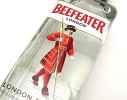by Michael Swanwick
The vodka ice palace lies five kilometers due north of Ginhenge. Which, as everyone knows, is located smack-dab on Pluto’s equator. The vodka ice palace is a modern creation, built (or rather, technically, poured) to house the thousands of tourists who flock to Pluto every year to see Ginhenge.
How old is Ginhenge? Who built it? These are enduring mysteries which may never be answered. Here are what few facts are known: The enigmatic structure, an exact one-to-one scale replica of Earth’s only slightly less famous Stonehenge, was discovered in 2301 by Tristram Lee Robinson, a wealthy sportsman who was determined to climb the tallest mountain on every solid planet in the Solar System. Pluto is, technically speaking, an ice dwarf rather than a planet, and its point of highest elevation is, like Olympus Mons on Mars, an effortless saunter from the lowlands, but Robinson was an obsessive. So it was he who made the discovery. Standing in the perpetual night of the Outer System (from the surface of Pluto, the Sun is no more than a bright star) Robinson encountered the inexplicable.
Archaeomixologists tell us that the gin from which the standing stones were made was probably a now-extinct brand called Beefeaters.
All else is speculation. Certainly somebody built it, and since the first human expedition to Pluto was in 2093, Ginhenge cannot possibly predate that year. Moreover, it is extremely unlikely that the Yi Soon-shin expedition created it. There is no record that they were carrying the tons of spirits it would have required, and the brave Korean taikonauts were doubtless too serious for such a prank. Nevertheless, it remains a major attraction for tourists from all inhabited worlds and habitats.
The ice palace was built for those tourists. Vodka rather than gin was employed as its building material so as not to confuse the visitor as to the magnitude of the Ginhenge-builders’ accomplishment. It was an absolutely staggering (not to mention wasteful) thing to do in the primitive ages preceding teleportation and direct matter translation technology. Nevertheless, the hotel itself, with its crystal-clear furniture and (for modesty’s sake) bubble-clouded walls is a delightful place to stay. Every surface has been coated with a non-heat-conducting surface for your comfort and safety.
However—and this cannot be emphasized enough—Ginhenge itself, as a cultural treasure, has not been so treated. It exists in exactly the same condition it was in when it was first discovered. The area has been covered with a transparent dome and filled with breathable air, true, and a thermoelectric field keeps the air a crucial millimeter’s distance from the ice. But the gin ice itself remains at the same temperature it has always been. Gin is made up chiefly of ethanol. Ethanol freezes at -114° C. The temperature at the very warmest spot on Pluto is -208° C, a mere 65° K above absolute zero.
So remember, no matter what your friends may say, not to touch your tongue to any of the sarsen stones. As the last five people who tried that stunt learned when the tips of their tongues instantly froze solid.
Along, of course, with all the rest of their bodies.
__________
Michael Swanwick is one of the most acclaimed and prolific science fiction and fantasy writers of his generation. He has received a Hugo Award for fiction in an unprecedented five out of six years and has been honored with the Nebula, Theodore Sturgeon, and World Fantasy Awards as well as receiving nominations for the British Science Fiction Award and the Arthur C. Clarke Award. His Hope In The Mist, a short biography of the poet and fantasist Hope Mirrlees, was on the Hugo ballot for Best Related Book this year. He has just finished a new novel, Dancing With Bears, featuring post-Utopian confidence artists Darger and Surplus, which will be published by Night Shade Books in May 2011. He lives in Philadelphia with his wife, Marianne Porter.
Copyrighted by the author unless otherwise noted.
Art Director: Bonnie Brunish


